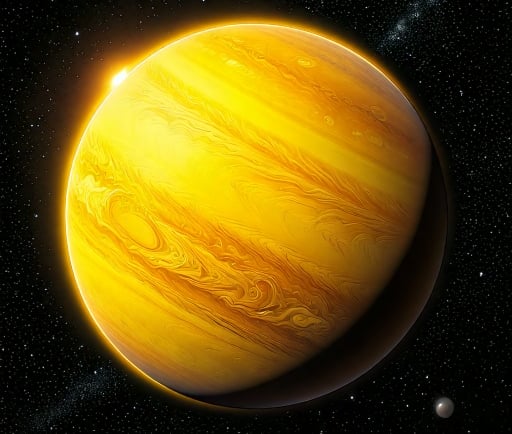The XO-2 S b: Part of the X0-2S Binary System


Introduction to XO-2 S b
XO-2 S b is a remarkable gas giant exoplanet that has garnered the attention of astronomers and space enthusiasts alike. Situated beyond our solar system, this intriguing planet orbits a G-type star, which is similar in characteristics to our very own Sun. Its discovery has opened new avenues for understanding the dynamics of gaseous planets and their formation processes, contributing significantly to the field of exoplanet research.
Characteristics and Environment of XO-2 S b
XO-2 S b is classified as a hot Jupiter, indicating that it possesses hefty gaseous layers and orbits very close to its host star. This proximity results in elevated surface temperatures that can reach well into the thousands of degrees Fahrenheit. The atmosphere of XO-2 S b is primarily composed of hydrogen and helium, akin to the gas giants in our solar system, such as Jupiter and Saturn.
The exoplanet's significant mass and size suggest that it could potentially harbor unique atmospheric phenomena. Advanced spectroscopic analyses may one day reveal critical insights into its cloud formations, weather patterns, and overall composition. Understanding these factors is crucial as they may offer clues into the broader behaviors of gas giants across the universe.
The Significance of XO-2 S b in Exoplanet Studies
Studying exoplanets like XO-2 S b enhances our knowledge of how planetary systems evolve. By examining the orbital characteristics and environmental conditions of gas giants, researchers can draw parallels with both our solar system and others. Moreover, the insights gained from XO-2 S b could help refine models of planet formation and migration, which are essential to understanding the diversity of planetary systems in our galaxy.
As we deepen our exploration of the cosmos, XO-2 S b serves as a benchmark for scientists to evaluate various theories regarding planetary atmospheres and their interactions with host stars. With ongoing advancements in telescope technology and observational techniques, the future promises exciting revelations about XO-2 S b and other similar gas giants.
In conclusion, XO-2 S b not only stands out due to its characteristics as a gas giant exoplanet but also plays a pivotal role in shaping our comprehension of planetary science. The discoveries made through studying such celestial bodies will continue to illuminate our understanding of the universe as a whole.
